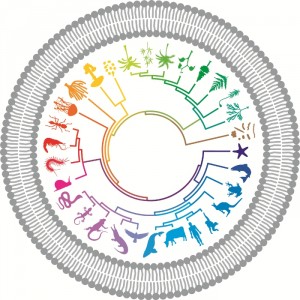
Some cells are huge, some are tiny, and we have remarkably little idea what decides how big a cell should be. Ten experts recruited by BMC Biology explore in a Forum article what proves to be a remarkably rich and varied territory in search of answers to questions each poses of his or her chosen organism. What is the effect of ploidy? Cell shape? How do the constraints of microtubule dynamics and elasticity set limits to the size of animal cells? How do bacteria optimize their surface-to-cytoplasm ratio for assimilating essential nutrients? How do plant cells adapt to accommodate their enormous vacuoles? How is size control linked to the machinery that drives the cell cycle?
Kevin Young tackles the issues in bacteria, Matthew Swaffer and Elizabeth Wood, with Paul Nurse, explore the issue of engaging the cell cycle machinery, Akatsuki Kimura asks how the cells of C. elegans cope with the physical constraints imposed by the cell division machinery, Joseph Frankel surveys a diverse fauna embracing multinucleate green algae, Acetabularia, and frog eggs, as well as the iconic Stentor, for clues, John Wallingford explains why shape matters; and Xian Qu and Adrienne Roeder cover a remarkable amount of ground in the exploration of plant cell size control, with Virginia Walbot explaining how to think inside the box (plant cells have walls).
Wallace Marshall introduces all these, outlining the ideas proposed to explain just how cells do determine their own size – and ending on a judiciously agnostic note.
Cell size regulation and how a cell knows how large it should be, he suggests, should be considered in the context of its environment and could be viewed as placing pieces in a puzzle. What determines the size of pieces for the puzzle and how it fits together is the territory explored by our experts. They do not give a clear-cut answer, but cell division (more specifically spindle location), cell growth and shape, and cell architecture, particularly the cytoskeleton, all contribute.
As an issue inviting (as our experts urge) the integration of many methodological approaches from sophisticated imaging to computational analysis, this seems to us an ideal arena for the sort of interdisciplinary research articles we should like to encourage, and we hope this Forum article will provoke scientists from different backgrounds to learn from others from different fields, and make new connections.
BMC Biology is pleased to include this second Forum article in our new series on Cell geometry, launched at the upcoming cell biology conference – ASCB. We hope you will enjoy reading the articles, and we shall welcome in our series research articles aimed at answering the many open questions exposed by our experts.
Ann Le Good, Deputy Editor, BMC Biology
Miranda Robertson, Editor, BMC Biology
Latest posts by Ann Le Good (see all)
- Embryonic transformations - 19th January 2015
- Questioning regeneration: answers from Alejandro Sánchez-Alvarado - 29th October 2014
- How do geckos climb? - 15th May 2014
Comments